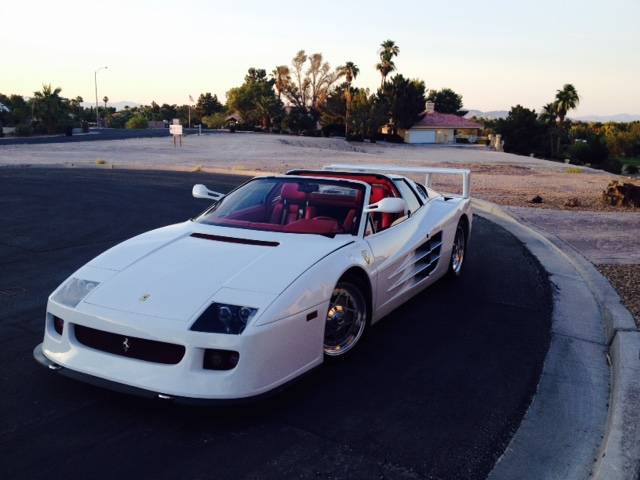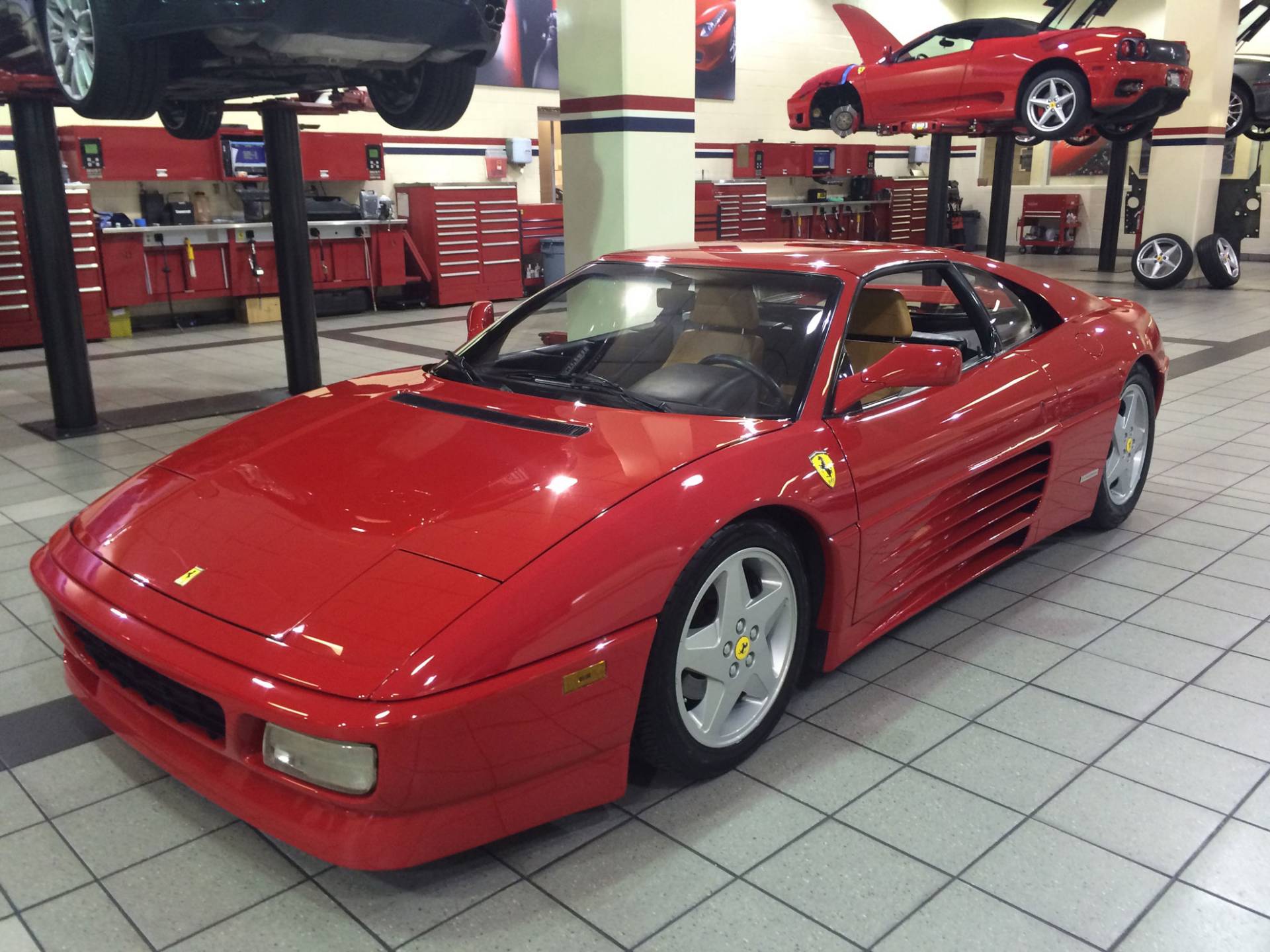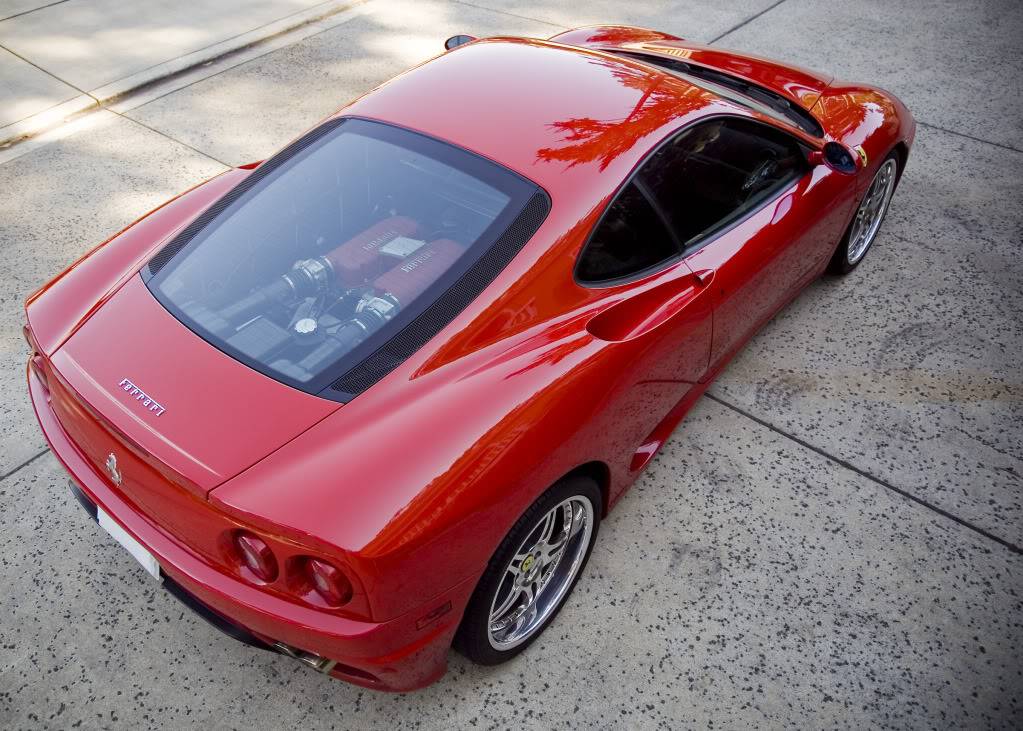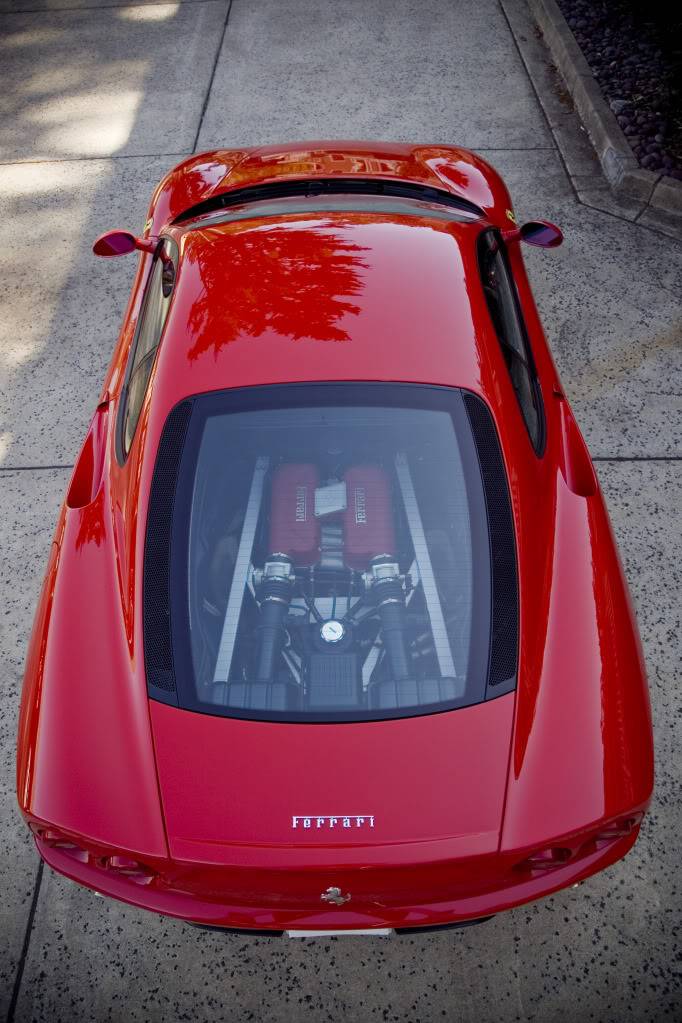The Ferrari Testarossa (Type F110) went into production in 1984 as the successor to the Ferrari Berlinetta Boxer. The Pininfarina-designed car was originally produced from 1984 to 1991, with two model revisions following the ending of Testarossa production and the introduction of the 512 TR and F512 M which were produced from 1992 to 1996. The Testarossa name paid homage to the famed World Sportscar Champion 1957 Ferrari 250 Testa Rossa sports racing car. Testa Rossa, which literally means “red head” in Italian, refers to the red-painted cam covers sported by both cars’ 12-cylinder engines.
Designer: Leonardo Fioravanti, Ian Cameron, Guido Campoli, Emmanuele Nicosia, Diego Ottina at Pininfarina
Body style: 2-door berlinetta
Layout: Rear mid-engine, rear-wheel-drive
Transmission: 5-speed manual
Predecessor: Ferrari BB 512i
Successor: Ferrari 550 Maranello
The Ferrari 348 replaced the 328 in 1989 and continued production until 1995. It was the final V8 mid-engine model developed by Enzo Ferrari. The 348’s styling differed from previous models with straked side air intakes and rectangular taillights resembling the Testarossa, stylistic themes reminiscent of the F40, the world’s fastest production car at the time, and other prestigious Ferraris of the past.
Designer: Pininfarina
Body style: Berlinetta (tb, GTB), Targa (ts, GTS), Spider
Layout: Longitudinal, rear mid-engine, rear-wheel-drive
Transmission: 5-speed manual
Predecessor: Ferrari F328
Successor: Ferrari F355
Ferrari partnered with Alcoa to produce an entirely new all aluminium space-frame chassis that was 40% stiffer than the F355 which had utilized steel. The design was 28% lighter despite a 10% increase in overall dimensions. Along with a lightweight frame the new Pininfarina body styling deviated from traditions of the previous decade’s sharp angles and flip-up headlights.
Designer: Pininfarina Ferrari
Body style: 2-door berlinetta, 2-door spider
Layout: Longitudinal, RMR layout
Transmission: 6-speed manual, 6-speed “F1” electrohydraulic
Predecessor: Ferrari F355
Successor: Ferrari F430
Officially unveiled at the 2009 Frankfurt Motor Show, the 458 was described as the successor to the F430 with entirely new design, incorporating technologies developed from the company’s experience in Formula 1. The car’s exterior styling and features were designed for aerodynamic efficiency, producing a downforce of 140 kg (309 lb) at 200 kilometres per hour (120 mph). In particular, the front grille features deformable winglets that lower at high speeds, in order to offer reduced drag.
Designer: Pininfarina Ferrari
Body style: 2-door berlinetta, 2-door spider
Layout: Longitudinal, RMR layout
Transmission: 7-speed dual-clutch
Predecessor: Ferrari F430
Successor: Ferrari 488
The body of the 488 has been designed to increase downforce by 50% over the 458 while reducing aerodynamic drag. A new front double splitter serves two functions: increasing radiator cooling by forcing air into them and also channeling the air over the underbody vortex generators to create ground effect without adding unwanted drag. A newly designed blown rear spoiler (actually a slotted flap) integrated into the rear decklid and bumper increases downforce without requiring a raised wing. The central “Aero Pillar” deflects air under the flat body of the car while two vents in the bonnet provide an exit for air from the dual intakes of the front bumper, further reducing air pressure over the front of the car.
Designer: Ferrari Styling Centre under Flavio Manzoni
Body style: 2-door berlinetta, 2-door spider
Layout: Longitudinal, RMR layout
Transmission: 7-speed dual-clutch
Predecessor: Ferrari F458
The Ferrari California T is the latest release from a distinguished line of California models since the introduction of the 1957 California 250 GT. The shapes of its flanks are inspired by the 250 Testa Rossa’s famous pontoon-fender stylings with the front wing line stretching back towards the compact rear. The engine is 40mm lower than the previous California with transaxle architecture providing perfect weight distribution with a slight bias to the rear as per Ferrari tradition … 47% front, 53% rear. With both chassis and bodyshell made entirely from aluminum, safety and performance have now been increased as a result of higher torsional rigidity, a particularly important factor for a drop-top car.
Designer: Centro Stile Ferrari in collaboration with Pininfarina
Body style: 2-door, 2+2 coupé cabriolet
Layout: Front mid-engine, rear-wheel drive
Transmission: 7-speed dual-clutch
Predecessor: Ferrari California



































